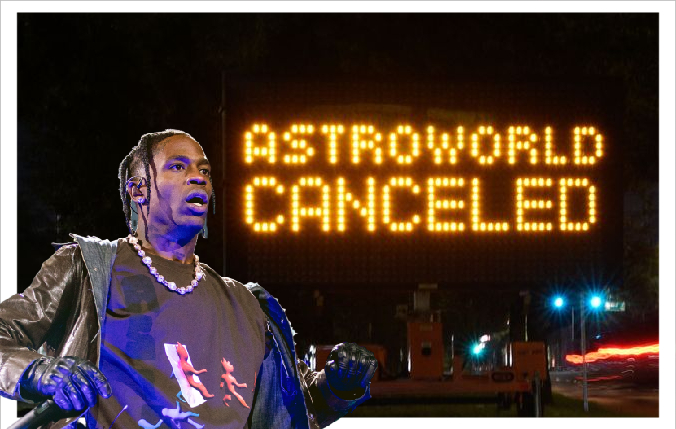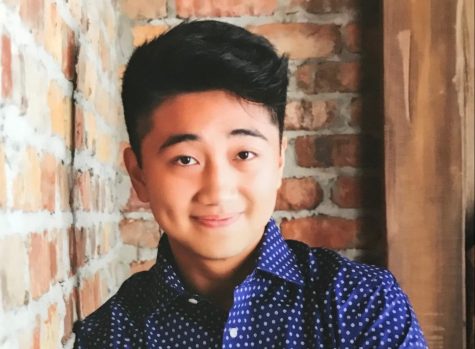Safety at Astroworld? Travis Scott faces backlash
The Houston Police Department and the FBI started a criminal investigation to address the possibility that counterfeit drugs lent a hand towards the deaths, alongside alleged fentanyl usage during Friday, Nov 5 concert. According to Houston Fire Chief Sam Peña, the Houston Fire Department utilized NARCAN on multiple concert-goers to counteract the effects of an opioid overdose. Possible charges–against Live Nation and Travis Scott himself–resulting from the investigation range from reckless endangerment to criminally negligent homicide.
November 12, 2021
Renowned rapper Travis Scott faces backlash because of his concert and staff’s neglect of life at the Astroworld Festival in Houston, Texas, held on Nov 5. Tragedy struck that night, with lack of medical staff resulting in the nine attendees Mirta Baig, 27, Rodolfo Pena, 23, Madison Dubiski, 23, Franco Patino, 21, Jacob Jurinke, 20, John Hilgert, 14, Axel Acosta, 21, Brianna Rodriguez, 16, and Bharti Shahani, 22, losing their lives. Hundreds of fans suffered injuries to similar occurrences and the Houston Fire Department (HFD) transported over 17 people to the hospital, 11 of which fought through cardiac arrest.
At Travis Scott’s concerts, mosh pits arose that resulted in numerous injuries that led to the deaths on that fatal night. Multiple sources agree that Scotts’ concerts should include an age limit because of his audience’s devil-may-care attitude during concerts. Throughout the previous decade, Scott faced multiple arrests and charges after concerts for provoking his audience to rush to the stage and encouraging violence against security.
Scott established his hit annual music festival in 2018, and issues emerged early on. In 2019, three people suffered injuries after eager fans rushed to enter the festival venue, crushing them. Numerous safety concerns arose surrounding Scott’s influence over his fans’ behavior at his concerts, such as Scott reportedly enjoying riling up his audience. In another instance in 2017, Scott pleaded guilty to disorderly conduct after encouraging his fan-goers to rush the stage.
In one instance, officials in 2015’s Lollapalooza music festival reported that Scott encouraged fans to vault security barricades. Scott aims to repair the wrongs resulting from this recent event by covering the costs of the victims’ funerals, alongside an offer presenting a month of therapy to any of the affected.
Scott’s audience during the recent 2021 concert underwent two different experiences: the back end of the crowd did not witness the traumatic turn of events from up close, and those closest to the stage heard horrific screams for help and suffocated in the hot, unbreathable environment that led to people falling unconscious. The medical staff, unable to reach said unconscious victims, could not help the soonly deceased, among other victims. Event organizers agreed to cut the concert short after receiving concerns from law enforcement, but Scott finished his set as originally planned.
“At Travis Scott’s Astrofest, many people got hurt that resulted in injuries. I believe it was not 100% Travis’s fault it was also the action of the people in the crowd themselves. If you see all those people fainting and getting crushed it’s common sense to backup or help. Those who lost their lives did not deserve to, they just wanted a nice experience. It was the actions of both Travis Scott and the crowd for these results of deaths and injuries,” sophomore Christian Farfan said.
Different conspiracy theories emerged about Scott’s concert because of the deaths and the event’s setup. Multiple people allegedly witnessed demonic rituals at the concert. As seen at Scott’s concert, his stage resembled an upside-down cross, a monogram showing above his stage of people walking up to heaven or an alternate universe. Others claimed that the concert tested fans with the COVID-19 vaccine by controlling them with magnetic frequencies. Social media giant TikTok started cracking down on conspiracy videos surrounding Astroworld. Certain theorists on the platform suggest the deaths propagated demonic rituals. Others draw a connection between the date of the event and the date of the Church of Satan’s establishment. However, people generally created these claims unsubstantially and without attending the festival themselves.
Astroworld exposed the lack of total safety at concerts and joins past concert tragedies including the Manchester Arena bombing and the Route 91 Harvest Festival shooting. These trials help set standards in the future for concert safety with regards to crowds and performers’ actions on-stage. This specific incident shows the danger of public events in the absence of firearms; even the subtle risks of a simple crowd can lead to sorrow.







